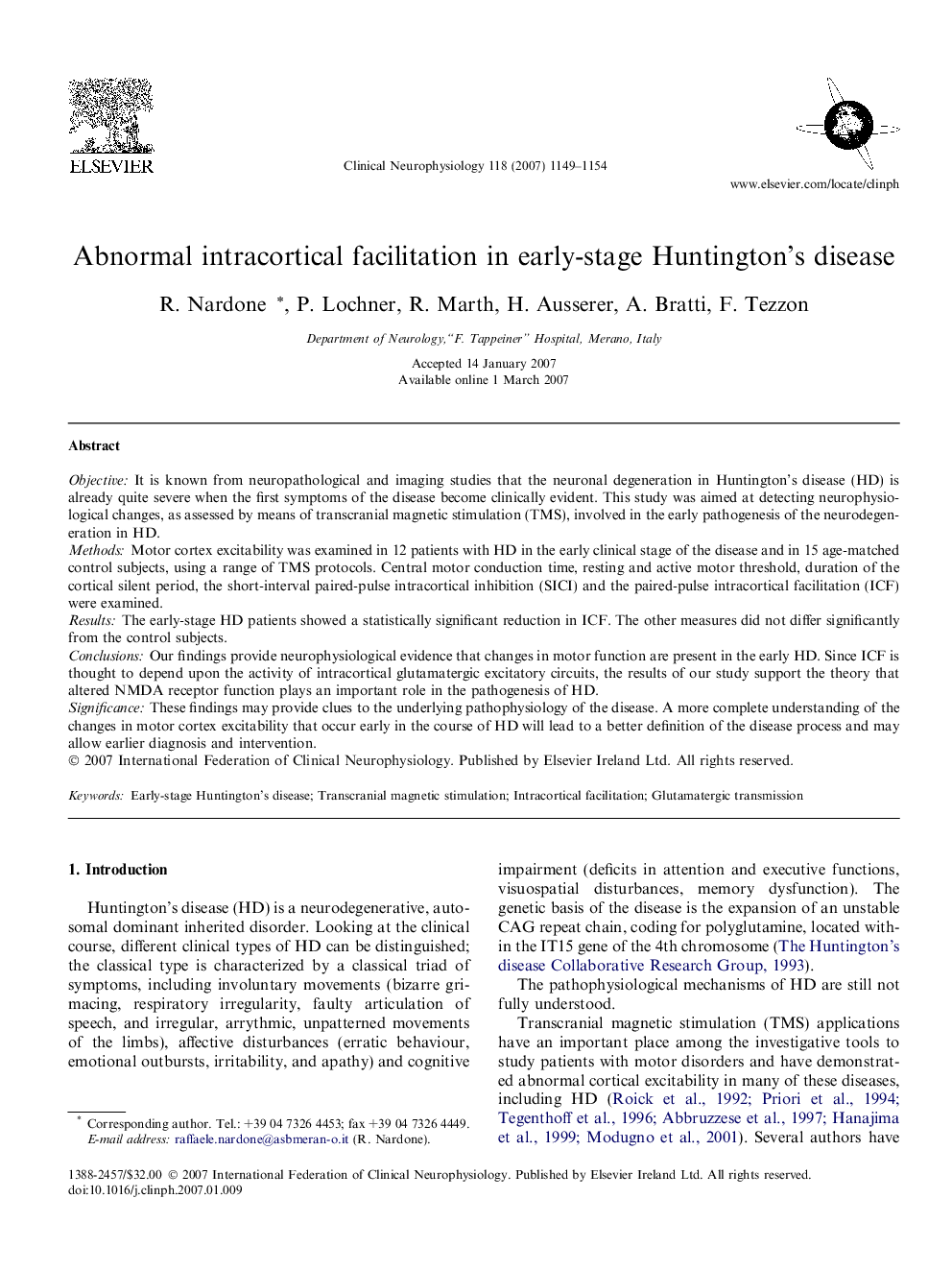| Article ID | Journal | Published Year | Pages | File Type |
|---|---|---|---|---|
| 3048537 | Clinical Neurophysiology | 2007 | 6 Pages |
ObjectiveIt is known from neuropathological and imaging studies that the neuronal degeneration in Huntington’s disease (HD) is already quite severe when the first symptoms of the disease become clinically evident. This study was aimed at detecting neurophysiological changes, as assessed by means of transcranial magnetic stimulation (TMS), involved in the early pathogenesis of the neurodegeneration in HD.MethodsMotor cortex excitability was examined in 12 patients with HD in the early clinical stage of the disease and in 15 age-matched control subjects, using a range of TMS protocols. Central motor conduction time, resting and active motor threshold, duration of the cortical silent period, the short-interval paired-pulse intracortical inhibition (SICI) and the paired-pulse intracortical facilitation (ICF) were examined.ResultsThe early-stage HD patients showed a statistically significant reduction in ICF. The other measures did not differ significantly from the control subjects.ConclusionsOur findings provide neurophysiological evidence that changes in motor function are present in the early HD. Since ICF is thought to depend upon the activity of intracortical glutamatergic excitatory circuits, the results of our study support the theory that altered NMDA receptor function plays an important role in the pathogenesis of HD.SignificanceThese findings may provide clues to the underlying pathophysiology of the disease. A more complete understanding of the changes in motor cortex excitability that occur early in the course of HD will lead to a better definition of the disease process and may allow earlier diagnosis and intervention.
